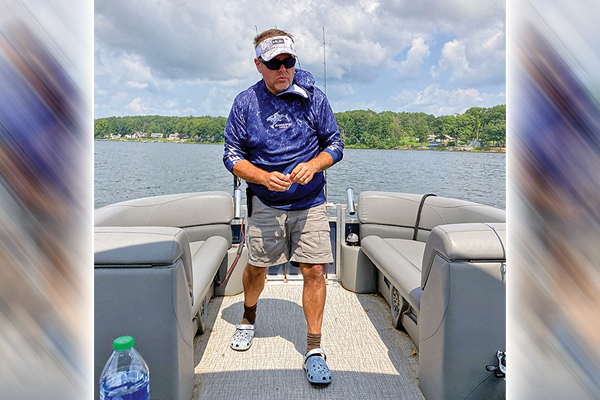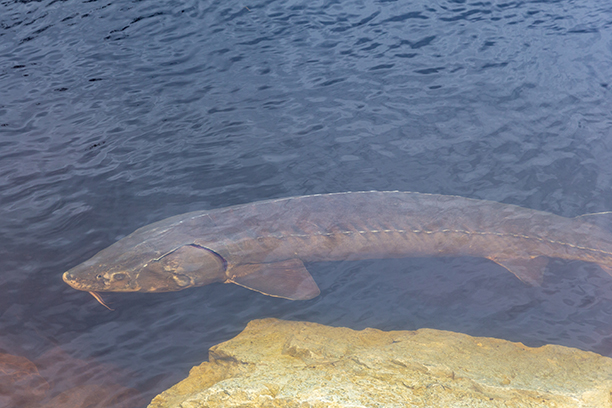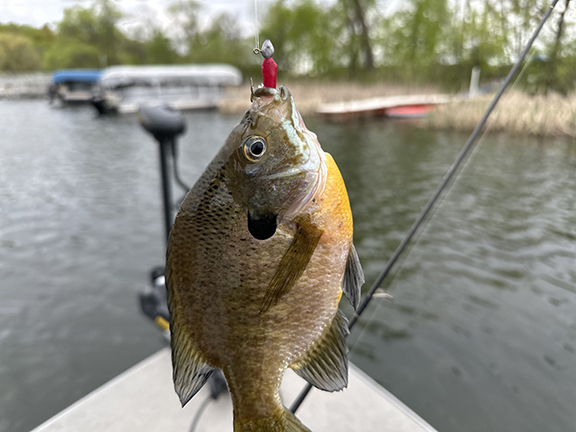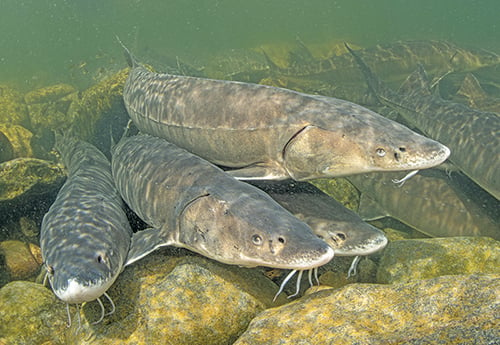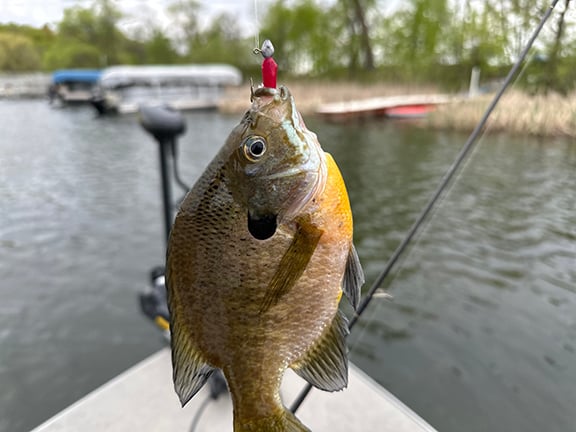Minnesota Mixed Bag: DNR cautions lake, river property owners about improper use of hydraulic jets – Outdoor News

St. Paul — The Minnesota DNR frequently receives questions about devices that generate water current to blast muck and aquatic plants away. They have various trade names, but the DNR refers to these devices generically as hydraulic jets. Even though they may be purchased in Minnesota, they may not be used in any way that disturbs the bottom of a water body or destroys plants.
A person may legally operate a hydraulic jet if it is placed at the surface of the water in such a way that it does not disturb the bottom or destroy rooted aquatic plants. It should be directed slightly upward toward the water’s surface. This can prevent dead vegetation and duckweed from collecting around docks and boat lifts.
“We want people to know why it’s important to protect aquatic plants,” said Shane McBride, DNR aquatic plant management consultant. “Plants are important to lakes and rivers because they help maintain water clarity, prevent erosion, stabilize the bottom of the water body, and provide habitat for fish and wildlife. Aquatic plants are protected under state law.”
Specific regulations govern aquatic plant removal and prescribe the situations that require permits from the DNR. Regulations and a guide to aquatic plants can be found on the Minnesota DNR website. To apply for an aquatic plant management permit, visit the Minnesota DNR’s permitting and reporting system.
MORE COVERAGE FROM MINNESOTA OUTDOOR NEWS:
What will become of measures that affect Minnesota’s outdoors during special session?
Importance of CRP ‘can’t be overstated’ as Feds offer new signup opportunity
Wildfires continue to burn in northeastern Minnesota
Be BearWise This Summer While Recreating Outdoors
St. Paul — The Minnesota DNR reminds hikers, campers, and others recreating outdoors to be aware of bears and learn how to prevent conflicts with bears.
Minnesota is bear country. People can peacefully share the outdoors with bears by paying attention to where and when they are most likely to be encountered. Black bears are naturally cautious animals that typically avoid human contact for their own safety. However, it’s important to be proactive to prevent human-bear conflicts.
“Coexistence with bears is completely doable with a few easy actions anyone can take,” said Andrew Tri, bear project leader. “The actions boil down to not surprising bears and making sure to secure things that bears will seek out as food.”
Learn more about how to safely recreate in Minnesota on the DNR bear safety webpage (mndnr.gov/bearsafety) and at BearWise (bearwise.org).
Metro Muskie Tourney is June 14
Blaine, Minn. — The 2025 Metro Muskie Tournament will be held June 14 from 6 a.m. to 3:30 p.m., with over $18,000 in cash and prizes up for grabs.
This is a catch-and-release tournament held on more than 20 lakes in the Twin Cities metro area. All muskies caught qualify for a grand prize one-week resort stay for two at Muskie Bay Resort in Ontario, a Slammer Lure package, and a muskie rod and reel combo. The tournament also includes junior and tiger muskie divisions.
The entry fee is $40 per angler, and tickets are available through June 13 at Thorne Brothers in Blaine or online through June 7. An awards ceremony will be held at Thorne Brothers starting at 4:30 p.m. on the day of the event.
Visit www.metromuskietournament.com for online entry to the tournament and for additional information.
[embedded content]
Chicks Have Hatched on DNR’s FalconCam
St. Paul — Four newly hatched chicks are now visible on the Minnesota DNR’s popular FalconCam. The Nongame Wildlife Program’s camera is in a nesting box in downtown St. Paul and will once again provide an intimate look at peregrine falcons raising their young.
The female of the nesting pair laid four eggs between March 31 and April 9, and all four hatched over Mother’s Day weekend. In these initial weeks, the female will be the primary parent, brooding and feeding the chicks, with the male providing support.
The recovery of peregrine falcons is a Minnesota success story. While still a species of special concern in Minnesota, they were once on the brink of extinction. Minnesota populations were restored with the help of falconers, the Midwest Peregrine Society, and the DNR Nongame Wildlife Program.
More information about peregrine falcons and the effort to restore them is available on the DNR website.
Project 435: A New Tool to Stifle Aquatic Invasive Species Spread
White Bear Lake, Minn. — Wildlife Forever has again teamed with Yamaha Rightwaters and the U.S. Geological Survey to create its newest tool in the battle to control the spread of invasive species. The helpful research tool, Project 435, identifies aquatic invasive species within each of the nation’s 435 congressional districts. The tool features 25 prominent aquatic invasive species and includes specific occurrence and location data.
“Project 435 is a new research and public awareness tool bringing specialized scientific data to the citizen scientist,” Zach Burnside, Wildlife Forever’s Invasive Species Program manager. “The map shows where aquatic invasive species are distributed across America. It also identifies the congressional districts that have greater occurrences of these invasive species and provides contact forms to reach each respective district representative to help make them aware of the problem.”
To learn about services, contact Zach Burnside at [email protected] or visit CleanDrainDry.org.

